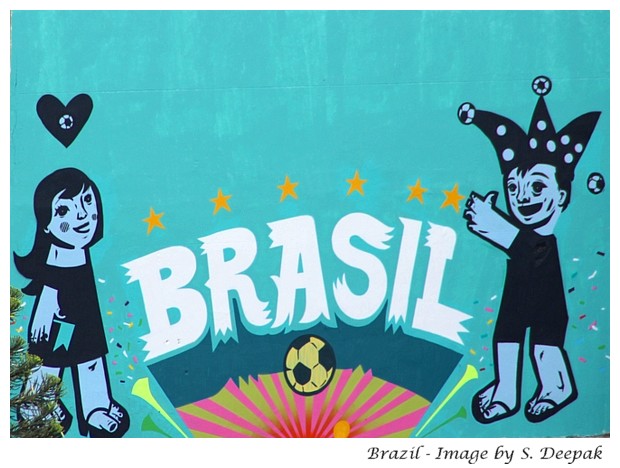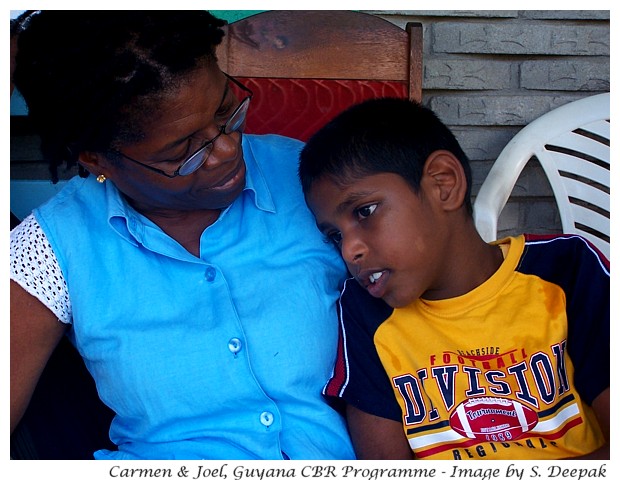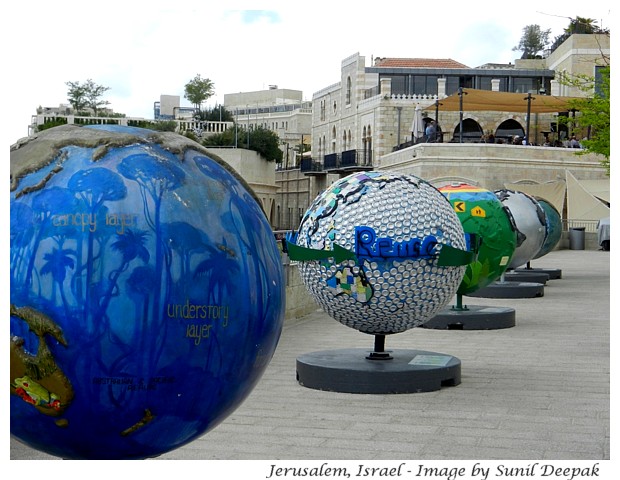In this post, I am going to talk about these 2 different ways of looking at religious differences and what we need to do for living with a diversity of beliefs.
The Two Articles
Let me start with the 2 articles which had stimulated this reflection. The first was an article in a recent issue of Readers' Digest magazine. Actually it was not an article but a snippet under the heading "Your True Stories". I am transcribing that snippet here:
The Two Articles
Let me start with the 2 articles which had stimulated this reflection. The first was an article in a recent issue of Readers' Digest magazine. Actually it was not an article but a snippet under the heading "Your True Stories". I am transcribing that snippet here:
Last December, a young lady ringing up my purchases greeted me with an enthusiastic Merry Christmas!” I was not offended, but I am a Muslim, and at the time I was wearing a beautiful headscarf in a manner identifying my spiritual convictions. I responded, “Happy birthday!” At first, she was taken aback, but then she nodded and laughed good-naturedly, acknowledging my point. I smiled back at her and said, “Merry Christmas to you.”
Faisal Khan has striven without pause for two goals — communal harmony and relief for the neediest. He is also a wonderful singer of the Tulsi Ramayan. Hindus of all types, from venerated guru to college students, have been charmed by his rendering of the Ramayan’s verses. Keen, as part of his efforts towards harmony, to identify with the traditions of his Hindu friends, Khan, along with associates, recently performed the much-valued Braj Parikrama. On the last day of this 84-km yatra, they went to Mathura’s Nand Baba Mandir, where they were courteously received by the priest.
Reading these 2 articles, made me reflect about the two approaches to inter-faith harmony.
Multicultural Approach to Inter-faith Harmony
I think that first article represents the multi-cultural approach to inter-faith harmony, which arose in UK or perhaps in Western Europe. Now this approach seems to be common in the West (Europe, USA and Australia). It is slowly making inroads even in countries like India, at least among some academic and activist groups. It asks individuals to respect the diversity of religions of others, by not offending them by involving them in things related to other religions. Thus, if we are Christians, it says that we should not have overt signs celebrating Christmas or Easter in public spaces and schools. If we have to greet people we do not know, we should use generic terms like "seasons' greetings" and to not "merry Christmas", for not offending non-Christians. People who believe in this approach, talk of tolerance and respect for other religions.If we believe in this approach to inter-religious relations for harmony, then if we are Muslims, we won't make Eid or Ramazan greetings to the non-Muslims and if we are Hindus, we would greet only other Hindus on our festivals.
Indian Approach to Inter-faith Harmony
When I grew up in India, our approach to diversity of religions was different. While in school, we had holidays for the festivals of all the religions. Since early childhood, I was used to meeting persons of different religions among neighbours, friends and in public spaces.
Over the years, we lived in different houses, where we had as neighbours families of different religions. Even at home, among the socialist friends of my father who visited us included persons of different religions. During our travels, I had stayed at the homes of family friends of different religions.
When I think of those years, it is remarkable that I can't remember ever thinking about the diversity of religions of all those encounters in India. I had been familiar with news of riots and religious riots, but somehow they had no real bearing with my relationships with persons of different religions. My first actual encounter with the underlining of and impact of diversity of religions happened in Italy, when a high school student asked me if I believed in Madonna. I had told him that I was a Hindu. He did not know any Hindu but he knew about protestants and that question was his way of reassuring himself that I did not deny the sacredness of Madonna. When I told him that I respected Madonna, he was reassured.
The basic understanding governing the multi-religious relationships in the India of my childhood was that all religions are about the one and the same God. Therefore, festivals of all the religions belonged to everyone. Having school holidays for all those festivals reinforced that feeling. So it meant, waking up at early morning to go out and stand on the side of the street to wait for Prabhat Pheri of the Sikh when they celebrated their Gurupurab. It meant wishing everyone Eid Mubarak and eating the sweet sewaiyan, that our neighbour Irene brought to our home. It meant going with my Catholic friend to the midnight mass in the Cathedral on the Christmas eve. It meant going into Buddhist temple to pray to Buddha. And, it meant, saying Happy Diwali to everyone and offering them sweets to celebrate the Hindu festivals.
In that India of my childhood, the idea of "tolerance" in reference to other religions, would have been kind of insulting, because we were expected to share the joy and sacredness of each religion and not just "tolerate" them
Which Approach Do You Prefer?
I think that with some exceptions, increasingly the modern world is going towards less orthodox religious beliefs. A large number of my friends and members of my extended family in India, do pray in temples and homes, but they are equally respectful of other religions. There are four inter-religious couples among my cousins' families. My own family is also inter-religious. With time, I expect that religious diversity in our family is only going to increase. This means that we shall have more occasions for celebrating festivals and also picking and choosing some aspects of ideas and practices of other religions in our daily lives. This seems to be in line with the ideas of inter-religious harmony with which I had grown up in India.It is true however, that even in India, I feel that compared to my childhood, today many groups of persons are more polarised in terms of religions. Though a lot of persons continue to value respecting and sharing among persons of different religions, those with polarised thinking speak louder and dominate many forums. Fortunately, India continues to have a lot of mixed religious spaces formed by inter-mixing of persons of different religions.
I think that the ideas of multi-culturalism approach to inter-religious relations in Europe and America, which are focused on "not offending those of other religions", are a result of increased encounters after the second world war and due to a globalised world, between the more secularised and less religious populations in the West with more conservative minorities, often immigrants, who feel that they need to hold on to their specific identities, for not getting lost in their new lands. Thus, I feel that it is an expression of cultural anxiety.
In many ways, these inter-cultural encounters are also shaped by identity politics and ways of reading all relationships in terms of dominance and oppression. Perhaps historians can tell us from the experiences of the past, how such encounters between people of different cultures can evolve and resolve?
Which of these two approaches to inter-religious harmony do you prefer?
Conclusions
From the way I talk about the Indian way of looking at the diversity of religions, it must be obvious that I prefer this approach to inter-faith harmony. At the same time, after my travels across different countries and encounters with a diversity of religions and cultures, I must acknowledge that many persons feel threatened or at least uncomfortable if they have to accept close contact with other religions. I try to respect their diffidence, though I must confess that I can't really understand their anxieties.I also try that I continue to deal with persons of different religions in my way. I go rarely to the mass in a church, but when I do, I am happy to bow my head and pray. I am not very religious, and while visiting temples, churches, gurudwaras and sufi dargahs, I try to feel the sacredness of their ambience and prayers. I also wish Eid Mubarak or Merry Christmas or Happy Deewali or Happy Navroz, to all my friends at the festival times without worrying if they are Hindu, Muslim, Jew, Christian or Sikh. However, if I know that a person does not appreciate receiving greetings for festivals of other religions, I try to be respectful of their choice.
I know that we live in polarised times. For whatever reasons, some people have become more aware of religious differences and at least some of them, do not wish to celebrate the festivals of others or to visit the others' prayer places. At the same time, I often find many persons who think about different religions like me, they are happy to listen to religious ideas of others and do not get offended by religious differences.
Personally, while each one of us is secure in his or her own religion, I would prefer a world of acceptance, respect and joy towards all religions. I know that it is an utopia, but I like utopias.
A final note about Mr. Faisal Khan mentioned above: I have read that Mr. Khan was arrested on 2nd November 2020 for offering namaz in the courtyard of a Hindu temple in India, though it was the temple priest who had suggested to Mr. Khan to pray there. I think that a Muslim singing Ramcharit Manas and praying in a Hindu temple can happen only in India because of this approach to inter-religious harmony that I am talking about. It is an embodiment of the Indic thinking which sees different religions as paths to the same God.
I hope and pray that better sense will prevail and Mr. Faisal Khan can be released.
I hope and pray that better sense will prevail and Mr. Faisal Khan can be released.
***

























